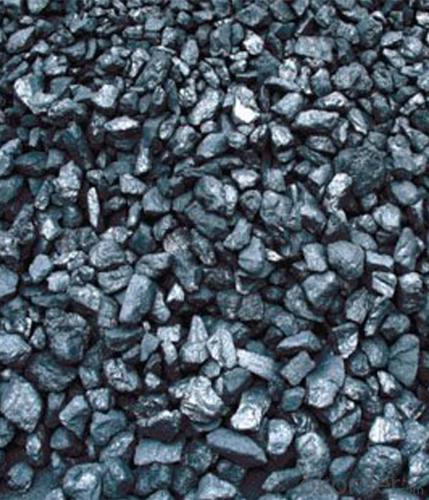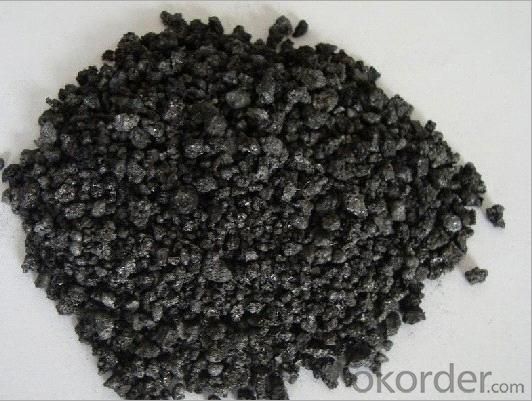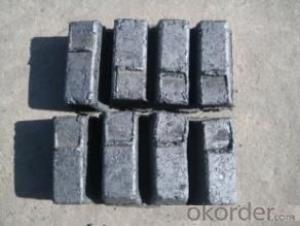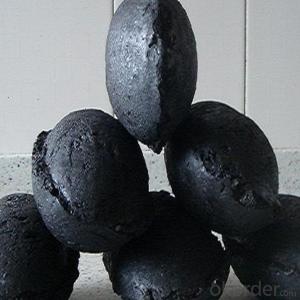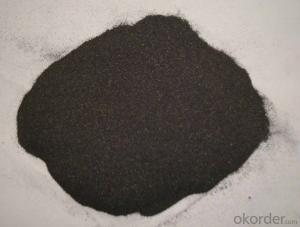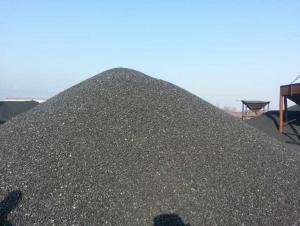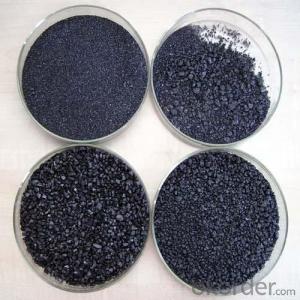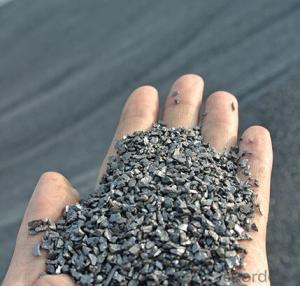Recarburizer CNBM FC92% For Steelmaking
- Loading Port:
- China main port
- Payment Terms:
- TT OR LC
- Min Order Qty:
- 0 m.t.
- Supply Capability:
- 100000 m.t./month
OKorder Service Pledge
OKorder Financial Service
You Might Also Like
Packaging & Delivery
| Packaging Detail: | 25kgs/50kgs/1ton per bag or as buyer's request |
| Delivery Detail: | Within 20 days after receiving corect L/C |
Specifications
Calcined Anthracite
Fixed carbon: 90%-95%
S: 0.5% max
Size: 0-3. 3-5.3-15 or as request
Our Products:
•Feature: All of our goods are made in the best quality of world famous Tianjin. All of our products are with High carbon, Low ash, low sulphur, Low Moisture.
•Application:
The Calcined Anthracite Coal/Gas Calcined Anthracite Coal/Carbon Raiser is mainly used in steelmaking in electrical stove, screening water, shipbuilding sandblast to remove rust. It can reduce the cost of steelmaking effectively by replacing the traditional petroleum coke of carburant.Also can improve the Carbon content in steel-melting and Ductile iron foundry.
General Specification of Calcined Anthracite:
PARAMETER UNIT GUARANTEE VALUE | |||||
F.C.% | 95MIN | 94MIN | 93MIN | 92MIN | 90MIN |
ASH % | 4MAX | 5MAX | 6MAX | 7MAX | 8MAX |
V.M.% | 1 MAX | 1MAX | 1.5MAX | 1.5MAX | 1.5MAX |
SULFUR % | 0.5MAX | 0.5MAX | 0.5MAX | 0.5MAX | 0.5MAX |
MOISTURE % | 0.5MAX | 0.5MAX | 0.5MAX | 0.5MAX | 0.5MAX |
Size can be adjusted based on buyer's request.
Pictures of Calcined Anthracite:

- Q: What are the basic structures of iron carbon alloys?
- The symbol is A. The stable austenite has a temperature of 727 DEG C, when the solubility of carbon is 0.77%, the strength, hardness and plasticity of austenite are very good, which is the organization required for high temperature forging or rolling of most steels.Cementite: a metallic compound of iron and carbon with a carbon content of 6.69%. The formula Fe3C is expressed in symbolic Cm. High hardness, poor plasticity, hard and brittle, the number of cementite increases, strength and hardness increase, while plasticity decreases.
- Q: What is the structure of a diamond, a form of carbon?
- The structure of a diamond, a form of carbon, consists of a three-dimensional arrangement of carbon atoms bonded together in a rigid lattice structure. Each carbon atom is covalently bonded to four neighboring carbon atoms, forming a tetrahedral arrangement. This strong and stable network of carbon atoms contributes to the diamond's exceptional hardness and high thermal conductivity.
- Q: What is carbon neutral manufacturing?
- Carbon neutral manufacturing refers to the practice of minimizing and offsetting greenhouse gas emissions produced during the manufacturing process. It involves implementing sustainable measures, using renewable energy sources, and investing in carbon offset projects to balance out the emissions released. This approach aims to achieve a net-zero carbon footprint, where the amount of carbon dioxide emitted is equal to the amount removed from the atmosphere, thus mitigating climate change impacts associated with manufacturing activities.
- Q: How does carbon affect the quality of drinking water?
- Carbon can affect the quality of drinking water through two main mechanisms: activated carbon filtration and carbon dioxide (CO2) absorption. Activated carbon filtration is commonly used in water treatment processes to remove organic contaminants, chemicals, and odors, improving the taste and odor of drinking water. On the other hand, excessive dissolved carbon dioxide in water can make it acidic and affect the pH level, potentially making it corrosive and altering the taste. However, carbon itself is not harmful to human health and can be beneficial in certain forms, such as in the form of activated carbon filters.
- Q: How does carbon impact ocean acidity?
- Carbon impacts ocean acidity through a process called ocean acidification. When carbon dioxide (CO2) from the atmosphere is absorbed by seawater, it reacts with water molecules to form carbonic acid. This acidification process lowers the pH levels of the ocean, making it more acidic. The primary source of carbon dioxide in the atmosphere is human activities such as burning fossil fuels, deforestation, and industrial processes. As the concentration of CO2 increases in the atmosphere due to these activities, more and more of it is absorbed by the oceans. The increase in acidity has several detrimental effects on marine life. Many organisms that have calcium carbonate shells, such as coral reefs, shellfish, and some plankton species, are particularly vulnerable to ocean acidification. The increased acidity makes it harder for these organisms to build and maintain their shells, leading to reduced growth rates and increased mortality. Ocean acidification also affects the entire marine food web. It disrupts the balance between predators and prey, as some species of plankton are less able to develop and survive in acidic conditions. This can have cascading effects on the entire ecosystem, impacting fish populations, marine mammals, and ultimately even humans who rely on seafood for sustenance. Additionally, ocean acidification can have significant economic impacts. Commercial fisheries and tourism industries that depend on healthy marine ecosystems can suffer due to the decline in fish populations and the degradation of coral reefs. To mitigate the impacts of carbon on ocean acidity, it is crucial to reduce carbon dioxide emissions and transition to cleaner and more sustainable energy sources. Taking steps to protect and restore marine ecosystems, such as creating marine protected areas and implementing sustainable fishing practices, can also help to mitigate the effects of ocean acidification.
- Q: What is carbon nanocomposite coating?
- Carbon nanocomposite coating is a type of protective coating that is made using carbon nanotubes or other carbon-based nanoparticles. These nanoparticles are dispersed within a matrix material, such as polymer or metal, to create a thin film that can be applied onto various surfaces. The main purpose of carbon nanocomposite coatings is to enhance the mechanical, thermal, and electrical properties of the coated material. The addition of carbon nanoparticles improves the strength, hardness, and wear resistance of the coating, making it more durable and long-lasting. It also provides excellent corrosion resistance, making it suitable for applications in harsh environments. One of the key advantages of carbon nanocomposite coatings is their ability to provide multifunctional properties. For example, they can be engineered to have high electrical conductivity, which makes them ideal for applications in electronics and electrochemical devices. Additionally, they can have high thermal conductivity, making them useful for heat dissipation in electronic devices or as a thermal barrier coating. Moreover, carbon nanocomposite coatings have shown promising results in various fields such as aerospace, automotive, energy, and healthcare. In aerospace, they can be used to improve the performance and durability of aircraft components, while in the automotive industry, they can provide anti-scratch and self-cleaning properties. In energy applications, they can be utilized to enhance the efficiency of solar panels or to prevent corrosion in oil and gas pipelines. Additionally, in healthcare, they can be used for drug delivery, as antibacterial coatings, or for bio-sensing applications. Overall, carbon nanocomposite coatings offer a wide range of benefits, including improved mechanical and electrical properties, corrosion resistance, and multifunctionality. With ongoing research and development, these coatings hold great promise for various industries, providing innovative solutions to address their specific needs and challenges.
- Q: What are the advantages of carbon-based fuel cells?
- Carbon-based fuel cells offer several advantages that make them a promising technology for the future. Firstly, they have a higher energy density compared to conventional batteries, meaning they can store and deliver more energy per unit weight. This allows for longer operating times and greater power output, which is particularly beneficial in applications requiring high power density and long-range capabilities, like electric vehicles. Secondly, carbon-based fuel cells boast a faster refueling time than conventional batteries. While it can take hours to recharge a battery, refueling a carbon-based fuel cell can be done in a matter of minutes. This significant advantage reduces refueling downtime and enables more convenient and efficient usage of the technology. Furthermore, carbon-based fuel cells have a lower environmental impact compared to traditional combustion engines. They produce only water and heat as byproducts, making them clean and environmentally friendly. This is in contrast to internal combustion engines that emit harmful pollutants contributing to air pollution and climate change. Another advantage of carbon-based fuel cells is their versatility and compatibility with existing infrastructure. They can easily be integrated into current energy systems, facilitating a smooth transition from fossil fuels to cleaner energy sources. This compatibility makes carbon-based fuel cells a viable option for various applications, from portable electronics to residential power generation. Lastly, carbon-based fuel cells have the potential to contribute to energy independence. As carbon-based fuels can be derived from renewable sources like biomass or waste, they offer a sustainable and domestically sourced energy solution. This reduces dependence on foreign oil and enhances energy security for countries. In conclusion, the benefits of carbon-based fuel cells include higher energy density, faster refueling time, lower environmental impact, compatibility with existing infrastructure, and the potential for energy independence. With these advantages, carbon-based fuel cells have the potential to revolutionize the energy landscape and provide a sustainable and efficient alternative to conventional energy sources.
- Q: What is the melting point of carbon?
- The melting point of carbon depends on the form in which it is found. Pure carbon exists in multiple forms, including graphite and diamond. Graphite has a high melting point of around 3,600 degrees Celsius (6,500 degrees Fahrenheit), while diamond has an even higher melting point of approximately 3,827 degrees Celsius (6,920 degrees Fahrenheit). These high melting points are a result of the strong covalent bonds between carbon atoms in these structures. However, it is important to note that carbon can also exist in amorphous forms, such as coal or charcoal, which do not have a specific melting point as they undergo a gradual decomposition process when heated.
- Q: Wrought iron, steel, cast iron, cast iron, according to the content of the carbon? How many?
- According to the carbon content, but not all. The wrought iron should be called industrial pure iron, the carbon content is below 0.02%, the carbon content of steel at 0.02-2.11%, the carbon content of pig iron in about 2.5-4.3%, and the carbon content of iron in 2.11-4%.
- Q: How is carbon dioxide formed?
- Various natural and man-made processes contribute to the formation of carbon dioxide. Fossil fuel combustion, including the burning of coal, oil, and natural gas, is a primary source of carbon dioxide. When these fuels are burned for energy or transportation purposes, carbon from hydrocarbons combines with oxygen from the air, resulting in carbon dioxide formation. In addition, carbon dioxide is released through natural occurrences such as volcanic eruptions and respiration by living organisms. During volcanic eruptions, molten rock releases carbon dioxide gas, which is then released into the atmosphere. Similarly, living organisms, including humans, animals, and plants, produce carbon dioxide as a byproduct of respiration, where oxygen is taken in and carbon dioxide is expelled. Furthermore, deforestation and land-use changes play a role in carbon dioxide formation. Trees and plants absorb carbon dioxide through photosynthesis, but when forests are cleared, this natural carbon sink is lost, leading to an increase in atmospheric carbon dioxide levels. Moreover, industrial processes like cement production and chemical reactions in manufacturing also contribute to carbon dioxide release. These processes involve the breakdown or burning of carbon-containing compounds, resulting in the release of carbon dioxide as a waste product. Overall, carbon dioxide is formed through a combination of natural processes and human activities. However, the burning of fossil fuels remains the largest contributor to the heightened levels of carbon dioxide in the atmosphere.
Send your message to us
Recarburizer CNBM FC92% For Steelmaking
- Loading Port:
- China main port
- Payment Terms:
- TT OR LC
- Min Order Qty:
- 0 m.t.
- Supply Capability:
- 100000 m.t./month
OKorder Service Pledge
OKorder Financial Service
Similar products
Hot products
Hot Searches




